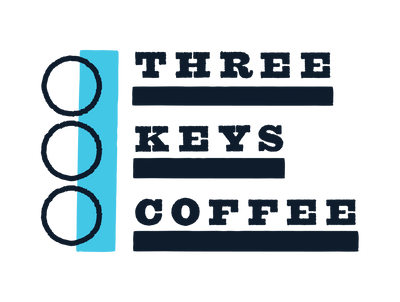· By Kenzel Fallen
Roast Showdown: Light vs Medium vs Dark
Before I started learning more about coffee, back when I was a Starbucks consumer, I used to believe that the darker the roast, the “stronger” the coffee, meaning it was bolder and had more caffeine. Big misconception! I’ve come to realize I’m not the only one who felt this way so I want to spend some time breaking down what each roast level actually means.
First understand that coffee starts out in a raw form called the “green bean” with a green/grey-ish color and aromas of grass and tobacco. Roasting the beans results in the browning effect called the Maillard Reaction, which is basically the same chemical reaction responsible for searing on grilled steaks or the browning of baked bread.
Light Roast:
Light roasts are a light brown color and tend to have a lighter body with bright, floral, fruity aromas. You may see lighter roasts referred to as having a “brighter acidity” but consider this phrasing refers to the sensations from the flavor compounds of citric or malic acid, for example, which may yield sharp or citrusy notes. Contrary to popular belief, a light roast bean will also contain more caffeine than a dark-roasted bean. Disclaimer: gram for gram, the caffeine content for dark & light roasts are roughly the same but bean-vs-bean, the light roasted bean contains more caffeine as it is more dense than a dark roasted bean—more on that to come in a later post!
Common names for this roast level include: Light City Roast, Cinnamon Roast, or New England Roast.
Try our Honduras Smooth Horn Blues for a Light Roast Single-Origin with notes of: Milk chocolate, berries, citrus, caramel

Medium Roast:
Medium roasts are browner and have a fuller body than light roasts, perhaps with some light oil starting to develop on the surface of the bean, especially those on the medium-dark side. These tend to be the best of both worlds, balancing flavor, acidity, and aroma with a touch of sweetness. They preserve more of the natural bean flavors while offering a bit of a caramel and “roasted” taste profile.
Common names for Medium Roast include: Breakfast Roast, Regular Roast or City Roast
Common names for Medium-Dark Roast include: Full-City Roast or Vienna Roast
Try our 33 1/3 Signature Blend for a balanced and structured Medium Roast

Dark Roast:
Dark roasted coffees are dark brown and may even be almost black. They are shiny with much of the oil having been pushed out of the bean and onto the surface. These will taste very toasted and smoky, almost even charred. This roast contains the least amount of caffeine. Many dark roasts are used for espresso blends.
You will find that coffee conglomerates (e.g. Folgers, Starbucks, etc.) tend to dark roast their beans because they are usually using lower-quality, lower-grade varietals; roasting dark is a way of masking undesirable notes of inferior raw beans. However if you’re drinking a specialty variety, you may want to try a medium or light roast to pick up on more of the complex, sweet, natural flavors of those higher-quality sources.
Common commercial names for Dark roasts include: French Roast, Italian Roast, or Espresso Roast.
Try our Brazil Bossa Nova for a Dark Roast Single-Origin with notes of Dark chocolate, caramel, peanut butter, and red fruit.

So which roast is the best way to enjoy coffee? All of the above. Coffee is a matter of preference and we at Three Keys love our light, medium, and dark roasts alike. There is no right or wrong way to drink the world’s favorite beverage. Whether you drink coffee black, with milk, over ice, or as an espresso shot, our only ask is that you try them all until you find your signature brew.
#ThreeKeysCoffee
